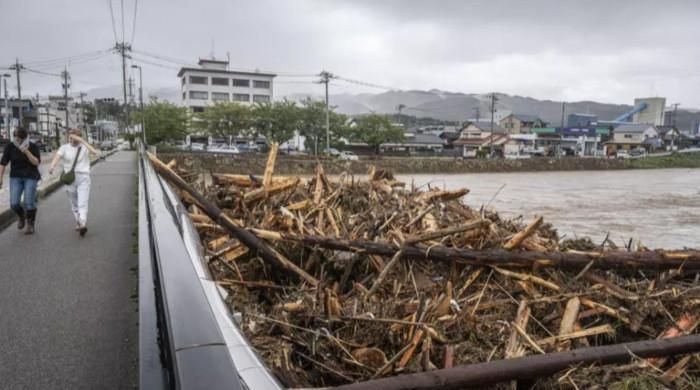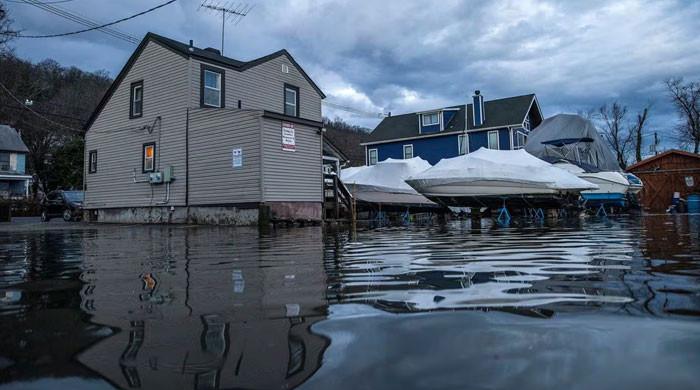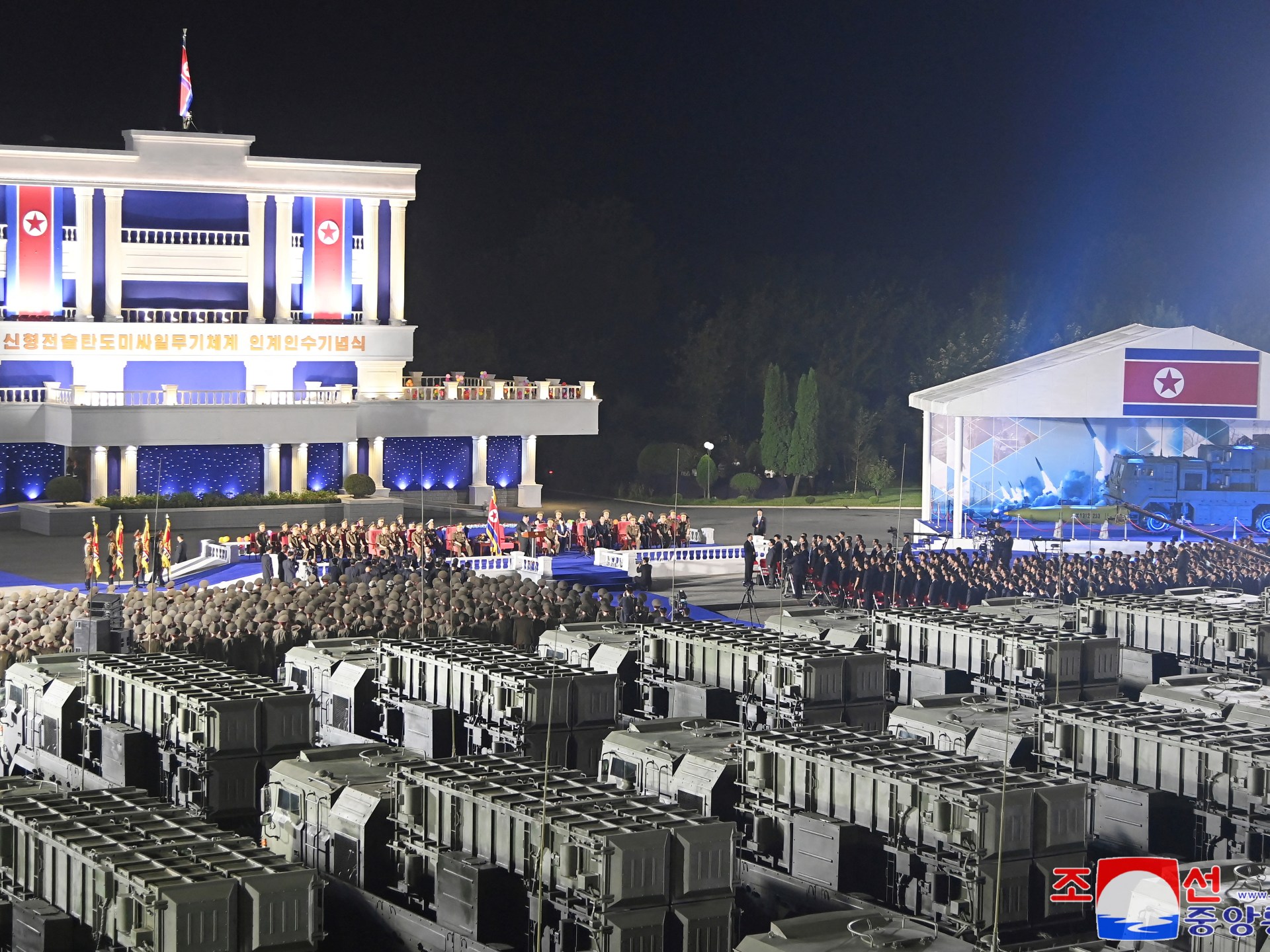WAJIMA, Japan: Flooding and landslides left one dead and at least six missing in central Japan as rescue and recovery teams worked Sunday on a remote peninsula already devastated by a massive earthquake earlier this year.
“Unprecedented” heavy rains that have battered the area since Saturday have begun to ease, leaving muddy scenes of destruction as the national weather agency urged residents to remain alert for loose soil and other hazards.
In Wajima City, piles of splintered branches and a huge uprooted tree piled up on a bridge over a river whose raging brown waters nearly reached ground level.
People were seen wading through the mud to try to pull out half-buried cars, while elsewhere floodwaters inundated emergency housing built for those who lost their homes in the New Year's Day quake that killed at least 318 people.
Eight temporary housing complexes were affected in Wajima and Suzu, two of the Noto Peninsula cities hardest hit by the 7.5-magnitude quake, which toppled buildings, triggered tsunami waves and sparked a large fire.
More than 540 millimetres (21 inches) of rain was recorded in Wajima in the past 72 hours through Sunday morning, the heaviest continuous rainfall since comparative data became available in 1976.
Landslides have blocked roads, complicating rescue efforts, and tens of thousands of people have been urged to evacuate from the region.
Muddy rivers ran wild in Anamizu, south of Wajima, where more rain fell on quake-damaged houses and shattered stone columns of a shrine still lying on the ground months after they were toppled on Sunday morning.
A message sounded from the city's disaster prevention system over loudspeakers warning residents that rain could flood the sewer system and bring up dirty water.
Hideaki Sato, 74, stood on a bridge holding a blue umbrella, looking anxiously at the swollen waters of a small canal.
“My house was completely destroyed by the earthquake,” he said. AFP.
“I live in a small apartment there now,” he said, pointing to a wooden structure behind him. “If this floods, it would be a real problem.”
'Ensure your safety'
Military personnel have been sent to the Ishikawa region on the Sea of Japan coast to join rescue workers, chief government spokesman Yoshimasa Hayashi said Saturday.
Some 6,000 households were left without power and an unknown number without running water, the Ishikawa regional government said.
The Japan Meteorological Agency (JMA) lowered its maximum warning to the second-highest alert on Sunday.
Areas under emergency warning were hit by “heavy rainfall of unprecedented levels,” JMA meteorologist Satoshi Sugimoto said Saturday, adding that “it is a situation where safety must be guaranteed immediately.”
Scientists say man-made climate change is increasing the risk from heavy rainfall because a warmer atmosphere holds more water.
As of Sunday morning, one person had died, three were missing and two were seriously injured in Ishikawa, the fire and disaster management agency said.
At least a dozen rivers burst their banks and two of the missing people were swept away by strong currents.
Three other people who were working for the Land Ministry to restore a road in Wajima were missing, local ministry official Yoshiyuki Tokuhashi said. AFP.
From Japan Kyodo News Four more people were reported missing in Wajima after a river flood swept away four houses.
One worker who had been reported missing “walked into the tunnel” near a landslide where others were taking shelter, Tokuhashi said, adding that the 27 workers had already been evacuated to safety.
Ishikawa municipalities have ordered 75,000 residents in the region, including the cities of Wajima and Suzu as well as the city of Noto, to evacuate, officials said.
The fire and disaster management agency said another 16,800 residents have also been ordered to evacuate in Niigata and Yamagata prefectures, north of Ishikawa.












